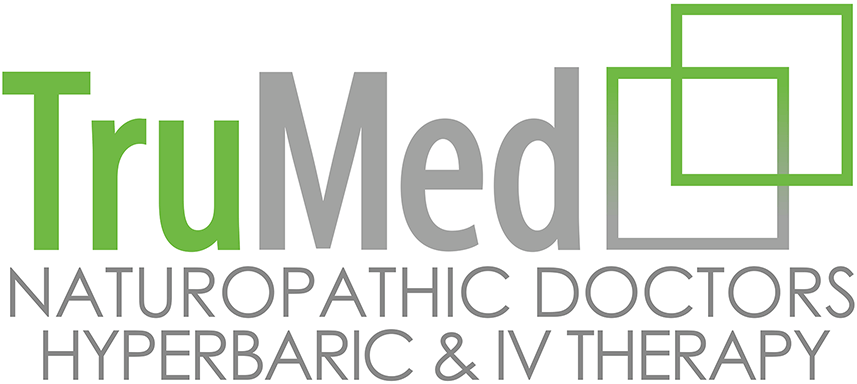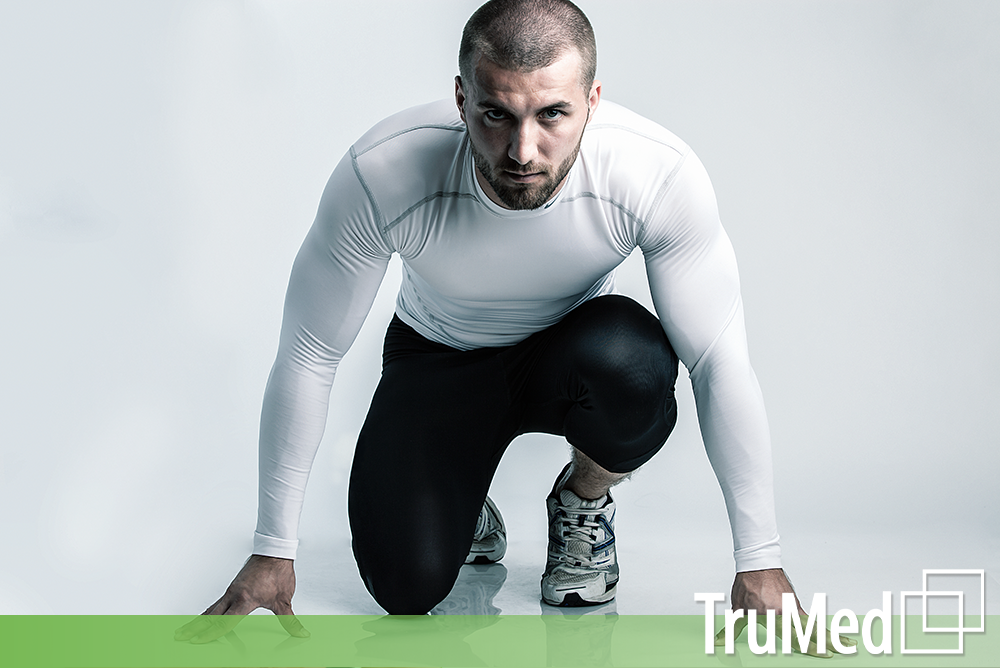Hyperbaric Oxygen Chambers & AthleticsHyperbaric Oxygen has been studied in Sports Injury & Recovery
Background:There is certainly a need to discover the fastest treatments that will allow an injured athlete to return to competition faster than the normal course of rehabilitation, or natural course of injury. The main effect of Hyperbaric Oxygen Chambers is "hyperoxia," that is, oxygen is dissolved physically in the blood plasma. For instance, breathing pure oxygen under Hyperbaric conditions at 2.0 ATA, the oxygen content in plasma is 10 times higher than when breathing air at sea level. With regards to sports injury, oxygen tensions in muscle tissue remain elevated for 1-2 hours post Hyperbaric exposure. Reduction of edema, an anti-inflammatory effect, new blood vessel formation, enhanced bone formation, as well as stimulation of collagen production and stem cell release are well known Hyperbaric effects that are applicable to sports injury. The Naturopathic Doctors at our Edmonton office frequently successfully use Hyperbaric Oxygen Chambers for athletic injury as no other natural medicine technique can hasten recovery in the same magnitude as this can. Human DataPerformance:Hadanny (2023) reported the use of Hyperbaric Chambers for middle-aged master athletes. Thirty seven athletes received either Hyperbaric Oxygen or SHAM treatment (double blind). 40 sessions Hyperbaric Oxygen 2.0 ATA for 60 minutes was used. Following HBO, there was a significant increase in the maximal oxygen consumption (VO2Max).
It was concluded HBO enhances physical performance which is related to improved mitochondrial function.The Naturopathic Doctors at our Edmonton office have observed that our high-level athletes seem to get a performance enhancing effect when they incorporate Hyperbaric Oxygen Chambers primarily in conjunction with IV therapy. Recovery:Mihailovic (2023) reported the use of Hyperbaric Chambers for cyclists. Twelve cyclists received Hyperbaric Oxygen following exercise and prior to a 5 minute maximal cycling effort. One treatment for 75 minutes was used at 1.3 ATA. The cycling power output was significantly higher after Hyperbaric Oxygen Therapy. An improvement in heart rate variability (parasympathetic activation) was also seen. Recovery enhancement is certainly something we have observed at our Edmonton office when our patients incorporate Hyperbaric Chamber treatment into their training protocols. Fatigue:Ishii et al (2005) reported that the use of Hyperbaric Chamber therapy for muscular fatigue in athletes during the Nagano Olympics. Seven Olympic athletes received Hyperbaric Oxygen for 30–40 minutes at 1.3 ATA for 2 - 6 treatments. It was found that all seven athletes benefited from Hyperbaric treatment with faster recovery rates. Fischer et al.(1988) found HBO treatment used in players between tennis games. HBO treatment lead to quicker recovery from fatigue, and better prepares the player for the next game. Once again, the Naturopathic Doctors at our Edmonton office have observed that our high-level athletes seem to get a fatigue mitigating effect when they incorporate Hyperbaric Oxygen Chambers especially in conjunction with IV therapy. Injury:A study from 1993 by James looked at 20 soccer players with injury using 2.0 ATA Hyperbaric Oxygen Therapy. The average "saving in injury time" was 70% by using Hyperbaric Chamber treatment. Three case reports from James (1993): Patient 1: Acute Achilles tendonitis that was expected to take four days to resolve. A single session of Hyperbaric Oxygen Therapy allowed him to resume full training after one day.
After two Hyperbaric Oxygen sessions he was able to resume training in 4 days.
He resumed training on the third day after Hyperbaric Oxygen Chamber therapy. Ishii et al (1999) looked at 22 athletes with various injuries including seven leg joint sprains, four knee ligament damages, four partial muscle ruptures, three peripheral nerve injuries, two fractures and two categorized as "other injuries." Hyperbaric Oxygen Therapy was set between 1.3 and 2.0 ATA, with dives from 30 to 90 minutes. More than 70% of the patients experienced improvement. HBOT in Athletes (Ishii 1999)
Joint Injury:In Soolsma (1996) the effect of Hyperbaric Oxygen was studied on the recovery of a grade II medial collateral ligament within 3 days of injury. One group was exposed to Hyperbaric Oxygen at 2.0 ATA for 1 hour and the control group at 1.2 ATA, of Hyperbaric air for 10 sessions. At 6 weeks, the Hyperbaric Oxygen group had improved pain and functional outcomes, such as decreased edema, better range of motion and maximum flexion. A 2019 study, by Yagishita looked at 32 rugby players with grade 2 MCL injury as well. 2.8 ATA for 60 minutes started as soon as possible, including the same day of injury.
The time to return to play was 31 days in the Hyperbaric group and 42 days in the non-Hyperbaric group. A 1995 a study suggested that ankle sprain patients treated with Hyperbaric Oxygen Therapy improved approximately 30% faster than a control group (Staples 1996). By far, in the context of athletics, the absolute best effects we have observed at our Edmonton office are when Hyperbaric Chamber are used for athletic injury - 25-50% faster recovery times in our experience. Hyperbaric Oxygen for Sports injury Sports & Brain InjuryA lack of appropriate treatment for traumatic brain injury (TBI) and chronic traumatic encephalopathy (CTE) exists within contact sports such as boxing and football. Two case reports on sports related TBI/CTE were published in 2011 by Stoller. A retired NFL player, at the time, in his early 50's with numerous concussions in his career and a history of numerous brain surgeries was studied. He was treated at 1.5 ATA for 40 treatments at 60 minutes per treatment. Marked improvements were seen in processing speed, cognitive function, memory and reasoning. A 15 year old high school football player that had two concussions two weeks apart who lost his ability to read and suffered from post concussive migraines was treated with the identical protocol. After treatment his visual motor speed improved 35%, reaction time 25%, as well as an 80% reduction in frequency of headaches. The Naturopathic Doctors at our Edmonton Clinic have tremendous experience using Hyperbaric Oxygen Chamber therapy to treat brain injury - and we have seen tremendous results in a range of patients. Naturopathic Sports Medicine:
Vitamin C improves tissue integrity, and plays a key role in wound healing by promoting collagen synthesis, and enhances immune function. Zinc also plays a role in wound healing (through its effects on nucleic acid and protein synthesis) and also enhances immune function. Vitamin A appears to increasing collagen production and cross-linking and of course is involved in immune function as well. It's common for our Naturopathic Doctors to use Vitamin C, A and Zinc in injured patients. Fish oil, Curcumin, Vitamin D, Magnesium, Zinc and Vitamin E are considered in athletes with brain injury as these have data supporting their use in TBI. Intravenous (IV Therapy) Interventions can be used to enhance levels of Vitamin C, Zinc, Copper, all the B Vitamins as well as key amino acids (Proline and Lysine in particular) for enhancing tissue repair. IV Therapy for sports injuries is usually suggested at a 1-2x weekly frequency. In summary, Hyperbaric Chambers can powerfully impact a range of areas relevant to athletes - as such we proudly provide this treatment to our Edmonton patients. Need Hyperbaric?
|
||||||||||||||

